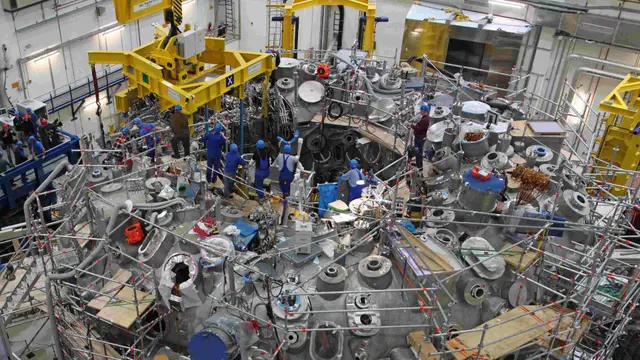A team of forward-thinking academics and researchers from Texas A&M University is at the forefront of nuclear material research, aiming to create safer and more advanced nuclear reactors.
This initiative is led by four dedicated individuals who have been awarded federal funding through the Rapid Turnaround Experiment (RTE) program.

Spearheaded by Ph.D. students Rijul Chauhan, Kenneth Cooper, and Zhihan Hu, along with graduate researcher Benjamin Mejia Diaz, these projects hold promise for revolutionizing the future of nuclear energy.
The RTE program, backed by the U.S. Department of Energy’s Office of Nuclear Energy, allocates resources to national facilities and universities to foster nuclear material innovation.
These funds empower researchers to explore new methodologies and gain insights into how materials behave under reactor conditions.
One area of focus is the resilience of materials to radiation.
Benjamin Mejia Diaz is pioneering a two-step irradiation technique that more accurately mimics neutron damage in reactor materials.
This method includes using a proton beam to initiate void formation followed by a heavy ion beam to test material swelling, getting closer to actual neutron damage simulation.
Rijul Chauhan is also investigating radiation’s impact on materials with an innovative approach to efficiently test different conditions simultaneously.
His work examines how materials react to radiation at varying temperatures, significantly enhancing the efficiency and speed of testing processes.
Kenneth Cooper’s research examines the interaction between radiation and corrosion in molten salt reactors.
Using specific fluoride-based salts, Cooper’s study focuses on how these materials might corrode stainless steel and Hastelloy X alloys, crucial for building more resilient reactors.
Meanwhile, Zhihan Hu is exploring HT9, a high-temperature alloy slated for potential use in next-generation reactors.
Hu’s research aims to deepen the understanding of how solid carbides form within HT9 due to irradiation and to determine the exact conditions and implications of these formations on material strength.
Together, these efforts by Texas A&M researchers could herald substantial advancements in nuclear reactor safety and efficiency.
By developing materials that better withstand harsh conditions, their work sets the stage for a new era of nuclear energy, ultimately leading to more reliable and sustainable power sources for the future.
